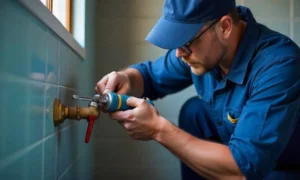What is pipe relining?
Pipe relining is a relatively new process used in plumbing and sewer repairs that offers an effective and economical solution to failing pipes. Through the use of special tools and materials, pipe relining allows plumbers to repair existing pipes with little disruption to the home or business; no large trenches or hands-on access are necessary. Instead, cured-in-place epoxy resin is inserted directly into the cracked or damaged pipe, creating a durable pipe replacement from within. This process can extend the life of any pipework significantly. It is especially useful for older buildings or locations with hard physical access problems making traditional trench repairs difficult or impossible. With this innovative technology, plumbers can successfully address pipe issues quickly and effectively without all the hassle of standard repair techniques.
Can I reline my pipes myself?
While pipe relining seems like it should be a relatively simple task, the reality is that pipe relining can be quite complex and time-consuming. The better option for most homeowners is to hire a pipe relining plumber Castle Hill who can ensure that the job is done quickly and correctly. With their skills and experience, pipe relining plumbers understand the importance of taking preventative measures to ensure your pipes are properly sealed so you do not need ongoing pipe repairs in the future. Plus, they know how to keep potential pipe damage from having lasting effects on your home’s structure and property value. You will get superior workmanship and specialized attention when you entrust your pipe relining project to an experienced pipe relining professional in Castle Hill.
How long does pipe relining take to cure?
The time it takes for pipe relining to cure can vary between a few minutes and several days, depending on the type of material used and the environmental conditions. For example, using CIPP (Cured In Place Pipe) lining in warm and dry atmospheres will generally take a lot less time to cure than if it is done in wet or cold areas. Different types of resin and materials can also impact the curing process, with some needing more time to complete than others. Although the exact time needed depends on many factors, most relining jobs typically take an hour or two to dry before being fully cured.
Is pipe relining worth it?
When plumbing issues arise due to a damaged or clogged drain, pipe relining is one popular option. This technique not only has the potential to save you time and money, but it also gives you added piece of mind knowing your pipes are not being dug up and replaced with entirely new parts. Pipe relining involves inserting an epoxy resin-coated liner into the existing pipe and then inflating it to take on the same shape as the old one. While there are certainly advantages to this approach, it is important to research whether or not pipe relining makes economic sense for your specific situation. In many cases, it may be worth the investment, but when excessive water damage has already occurred or digging up a portion of the yard is a better long-term solution, pipe relining may not be cost-effective for some homeowners.



































